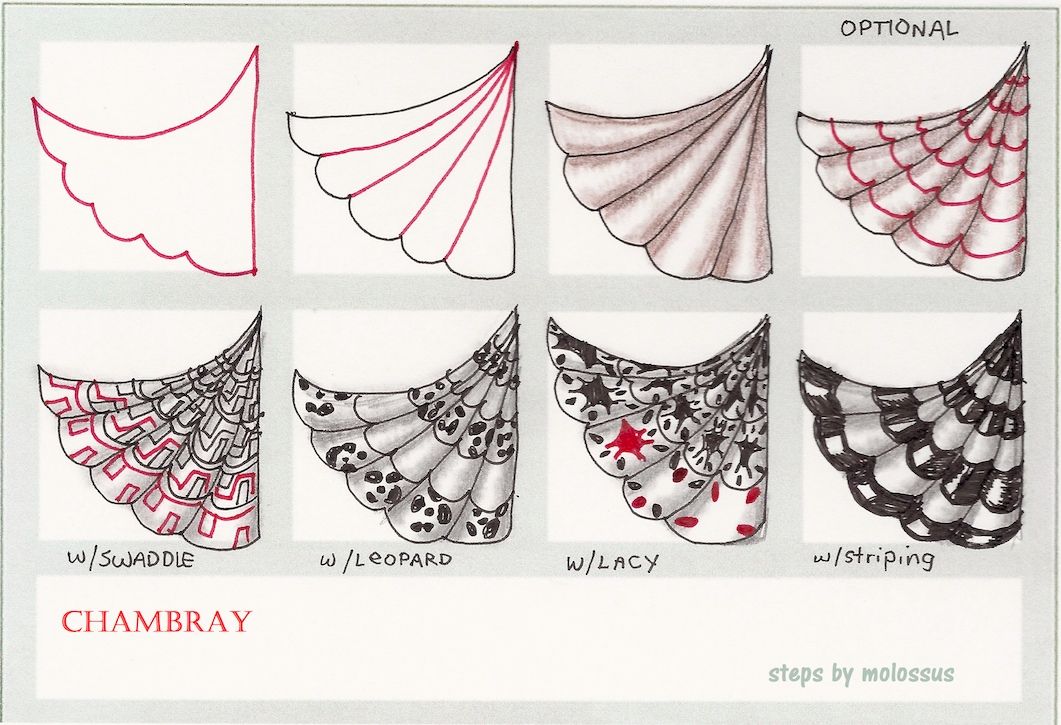I recently received an email from Lydia that read:
"I have a question about a couple of your drawings in your book Totally Tangled

. The one on page 34 in the lower right corner and the one on page 47 lower right corner. Could you email me the directions on how to do these two or put the illustrations on your website? I have looked at these two and really like the way they look. They are very different as though they have fabric just laying on them. Thank you and I really have enjoyed looking at your book and designs."I didn't even have to look in the book to see what she was talking about. "Fabric" was the giveaway - that's Sandra Strait's work she's talking about! So I asked Sandra to comment on her designs. Here are her instructions for creating her amazing fabric look:

There are two parts to creating a tangle that looks like fabric. Chambray isn't meant to exist on its own. It should have another tangle design overlaid on it.The secret to drawing Chambray is in the shading. Look at step 3, how the fold line is in the center of the pencil shading. This represents the deepest part of the fold. With a stump or finger, smooth the pencil shading on one side, smoothing to the side, not up or down. Then go to the other side, smoothing in the other direction. Be sure to leave a clean area in the center, which then becomes the highlight at the top of each fold.Now you have this lovely fabric, and want to add a design. Choose simple tangles. With folded cloth, there is distortion of design. If your overlay tangle is too complex, you will lose control of it. Work from the corners inward so that you follow the curve of each square. Accept some distortion, because your squares will not be exact. Note that with Striping, I simply darkened the shading and kept the highlight. After you overlay the design, if you feel you have lost the up and down of the folds, re-shade along the fold lines from step 2. But smooth lightly. You don't want to lose the highlights. If you have other questions related to the book, I'd love to know how I can help. But also take a look at the Resources section in the back - most of the artists have an email address listed so you can ask them directly about their work.
Subscribe to our email newsletter and unlock access to members-only content and exclusive updates.
Comments